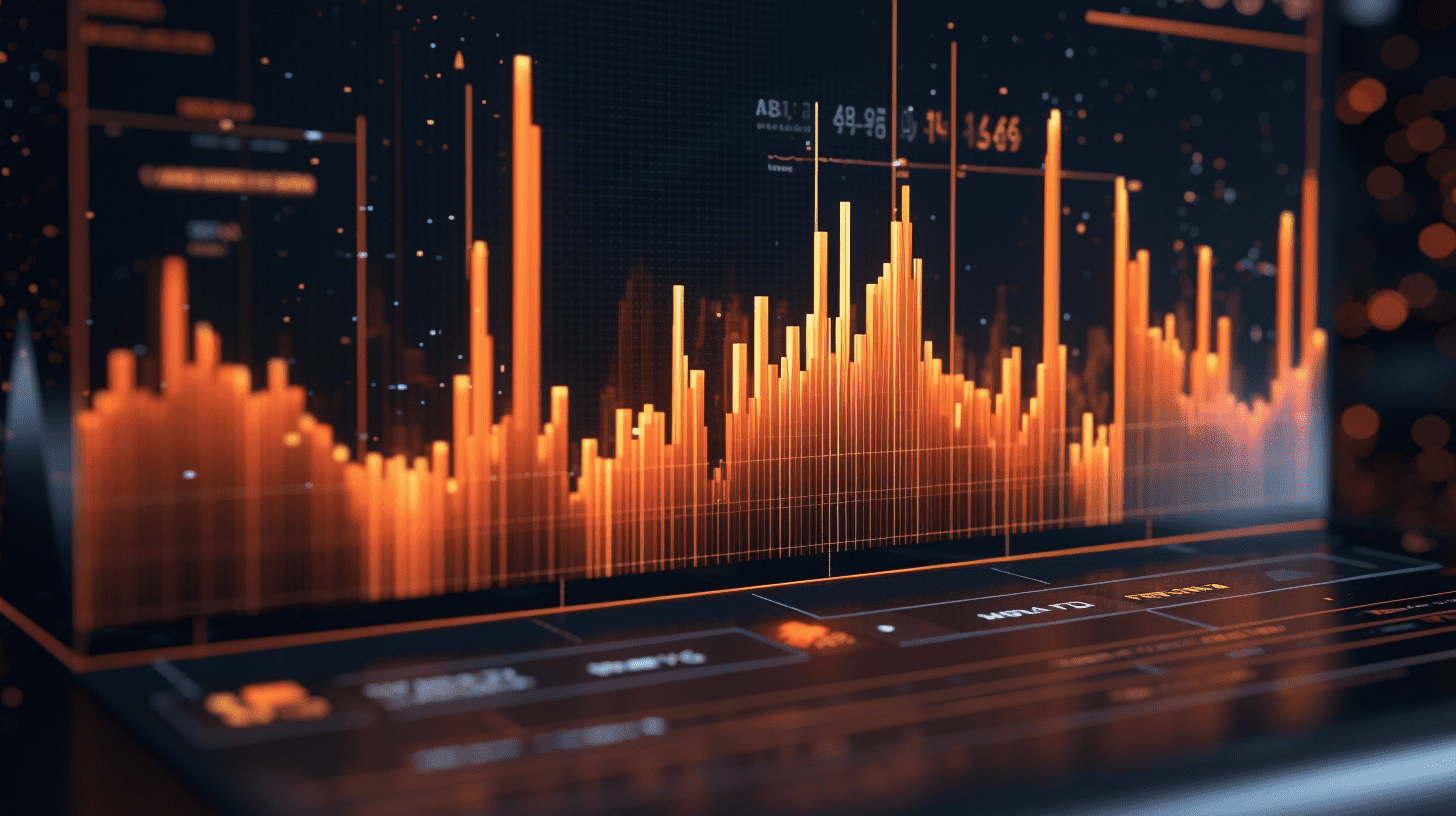After the stock price fell by nearly 90%, Hygeia Health (06078) stabilized its underlying value and is now approaching the eve of a valuation reversal.
Although the revenue and profit of Haigia Medical have declined in the past two years under the comprehensive implementation of DRG policies, its hospital and patient visit volume remain stable.
On August 15th this year, HYGEIA HEALTH (06078) issued a profit warning, indicating that its revenue for the first half of the year is expected to decline by about 15% to 17% year-on-year, and net profit is expected to decrease by about 34% to 39% year-on-year.
After the announcement, on August 18th, HYGEIA HEALTH's stock price opened lower and fell by 3.42% to 15.55 Hong Kong dollars. Subsequently, the company's stock price continued to decline, hitting a low of 13.12 Hong Kong dollars on October 14th. Although the stock price only dropped by about 15% in the past month, this decline is just a small part of HYGEIA HEALTH's long downward cycle.
Looking at a longer timeline, HYGEIA HEALTH's downward cycle began in 2021, with the company's stock price dropping from a high of 109.43 Hong Kong dollars to around 13 Hong Kong dollars now, representing a decrease of 87.95%, with a P/E ratio of 13.03. One of the main reasons for this decline is the "DRG payment reform" mentioned in the company's interim report this year.
Behind the almost 90% drop in HYGEIA HEALTH's stock price, DRG/DIP is undoubtedly the major driving force behind this turbulence.
With the full implementation of the National Healthcare Security Administration's "Three-year Action Plan for DRG/DIP Payment Reform," medical institutions are undergoing a fundamental transformation from expansion in scale to internal construction.
In fact, DRG fundamentally shifts the allocation of medical insurance funds from hospitals to disease or disease groups. Patients under the same disease diagnosis-related grouping have the same medical insurance payment standards, with hospitals bearing the excess costs or retaining the surplus, thus creating internal incentives for cost control. In other words, DRG (Diagnosis Related Groups) payment model shifts medical insurance payment from itemized payment to disease-based bundled prepayment, leading hospitals to shift from maximizing income to optimizing costs. For private hospitals, the most immediate negative impact is the compression of profit margins.
According to HYGEIA HEALTH's disclosed 2025 interim report: the company's revenue in the current period was 1.99 billion yuan, a year-on-year decrease of 16.47%; net profit was 246 million yuan, a year-on-year decrease of 36.18%; adjusted net profit was 263 million yuan, a year-on-year decrease of 34.47%.
But behind the double-digit decline in overall revenue and net profit, the performance of the company's business units differed. The financial report shows that the current income of the two major businesses, inpatient services and outpatient services, was 1.22 billion yuan (a decrease of 18.4% year-on-year, an increase of 2.1% quarter-on-quarter) and 722 million yuan (a decrease of 11.2% year-on-year, a decrease of 12.2% quarter-on-quarter).
That is to say, aside from the impact of seasonal fluctuations, the company's outpatient service income remained relatively stable compared to last year, while inpatient service income, after fluctuating in the second half of last year, showed signs of stabilization and recovery. Additionally, the financial report also mentioned that in the first half of this year, the number of outpatient visits reached 2.2 million, which was consistent with the previous year, indicating that the number of visits to HYGEIA's hospitals remains stable.
The key significance of this data lies in the fact that it reflects that the demand for visits to HYGEIA hospitals has not been affected, and the actual impact of the DRG payment reform on the company has only led to a decrease in per hospital revenue. This is not a "fatal blow" for a company focused on expanding its network of sinking hospitals, cost control, and supply chain integration.
Furthermore, in the financial report, HYGEIA also explicitly mentioned optimizing capital allocation.
Regarding self-built hospitals, the company stated that the new hospitals, Wuxi HYGEIA Hospital, Kaimu Jiehua Hospital Phase II, and the new hospital area of Qufu Hospital, will be put into operation this year. By the end of this year, the company only has one hospital under construction, Changshu HYGEIA Hospital, which is planned to be put into operation in 2026. This information indirectly confirms HYGEIA's statement that the company has "passed the peak of capital expenditure," with the current capital expenditure amounting to 242 million yuan, down 28.5% year-on-year.
At the interim performance meeting, the company's management also stated that they will not consider building new hospitals in the short term, but will prioritize mergers and acquisitions. Therefore, there is a certain level of controllable expectation in terms of capital expenditure for HYGEIA HEALTH in the future.
Overall, although HYGEIA HEALTH's revenue and profit have declined in the past two years due to the comprehensive implementation of the DRG policy, the underlying stability of its hospital and patient base remains solid. As the company passes the peak of capital expenditures, its net profit performance may approach a cyclical low at a certain point in time, and ultimately, with the concentrated production period of new capacity and the increase in market concentration in the long run, it may achieve a rebound in revenue and profit, thus offsetting the negative impact of the DRG payment reform.
When will the turnaround occur?
The reason for the assessment that HYGEIA HEALTH is likely to reverse its negative profitability amid the backdrop of increased production capacity and growing market concentration lies in the company's stable patient base mentioned earlier.
From a market perspective, as of last year, the number of people over the age of 60 in China reached 310 million and is expected to grow to over 400 million by 2035. Based on this, the market predicts that the compound annual growth rate of the domestic oncology market from 2026 to 2030 will reach 9%, with the compound annual growth rate of private oncology institutions reaching 17%. With the favorable policy of establishing an innovative drug catalog for commercial insurance in China this year, services of specialized oncology hospitals under the backdrop of an aging population are undoubtedly a market with high certainty. The patient base of HYGEIA mentioned earlier is an important evidence of this market certainty.
From the secondary market perspective, although from the third quarter of 2021 to the present, HYGEIA HEALTH's stock price has only achieved positive growth for four quarters, the downward trend of the stock price has clearly slowed down in 2025 when the DRG model was fully implemented nationally. Moreover, trading volume has gradually increased since the third quarter of last year. Thus, there is a phenomenon of "price stability with increasing volume" at the quarterly level.
In recent days, from a technical perspective, the day after HYGEIA HEALTH issued a profit warning for the mid-year report, the company's stock price fell below the BOLL lower rail, and although there were small fluctuations afterwards, the stock price basically moved along the BOLL lower rail. During this period, HYGEIA HEALTH's stock trading volume also remained low, with the daily average trading volume from August 19th to September 15th not exceeding 10 million shares, indicating a subdued market sentiment.
Although there was a small rebound in late September-early October, trading volume clearly showed a rise without volume, and ultimately the company's stock price quickly fell after touching the upper BOLL rail, reaching a phase low.
Considering the distribution of chips, due to the continuous decline in recent times, HYGEIA HEALTH's stock price has clearly entered an oversold range, with a large amount of chips trapped due to the stock price being significantly lower than the average cost of 15.16 Hong Kong dollars. On October 14th, the overall profit ratio of chips was only 0.63%, with a chip overlap rate exceeding 70%. Considering the trading volume, HYGEIA currently appears to be in a decreasing volume and price decline situation. At this time, holders are continuously selling, but those holding off-market are choosing to wait and see, with insufficient bullish trading intentions, and bearish forces having more of an advantage.
On October 15th, the trading volume of HYGEIA HEALTH's stock further dropped to 3.0456 million shares compared to the previous day, but the stock price rose by 1.82% to 13.41 Hong Kong dollars, close to the previous day's opening price, indicating that both buyers and sellers are in a wait-and-see mode, with the possibility of a change in the near future.
However, even with a small rebound in the short term, it is difficult for HYGEIA HEALTH to fully realize the reversal of profitability amid the negative news. Based on the current market sentiment, it may not be until the company discloses key positive information such as the release of production capacity that investors will have a critical time point for bottom-fishing positioning.
Related Articles

US Stock Market Move | Omeros Corporation (OMER.US) soars 150% following asset purchase and license agreement with Novo Nordisk A/S Sponsored ADR Class B.

US Stock Market Move | Bloom Energy(BE.US) rises more than 6.8% and forms a strategic partnership with asset management giant Brookfield.

US Stock Market Move | Lithium battery concept stocks generally rose Microvast (MVST.US) rose more than 14%
US Stock Market Move | Omeros Corporation (OMER.US) soars 150% following asset purchase and license agreement with Novo Nordisk A/S Sponsored ADR Class B.

US Stock Market Move | Bloom Energy(BE.US) rises more than 6.8% and forms a strategic partnership with asset management giant Brookfield.

US Stock Market Move | Lithium battery concept stocks generally rose Microvast (MVST.US) rose more than 14%






